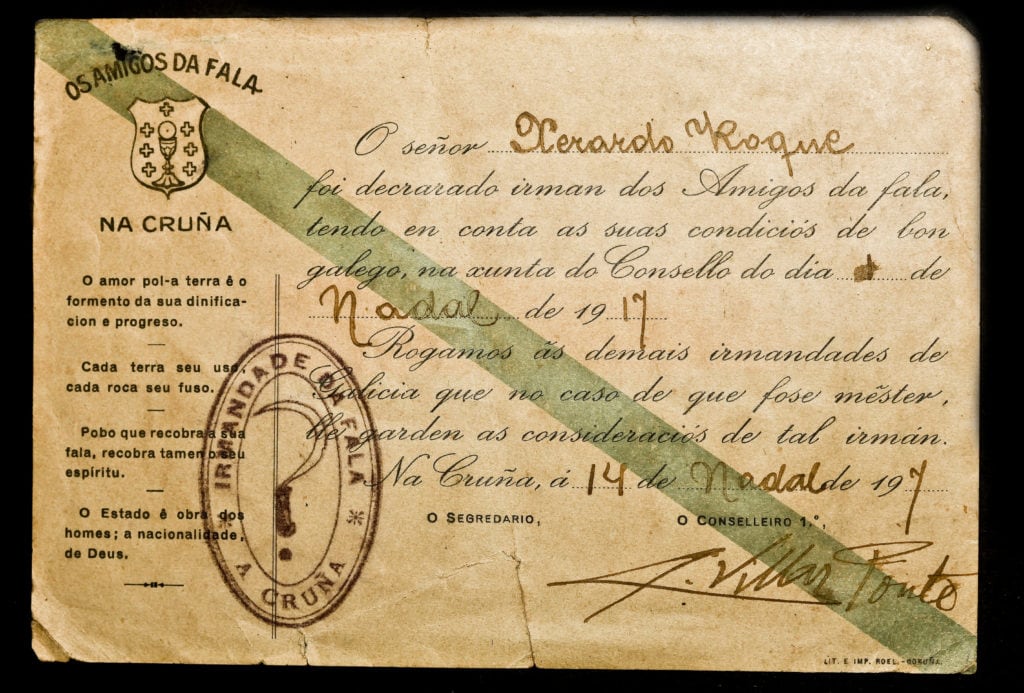Galicia’s Cultural Revival—Irmandades de Fala and Xeración Nós

In the period between the beginning of the Rexurdimento [Galician Renaissance] and the Spanish Civil War (from ~1863-1936), there was a rise of nationalist and regionalist pride in Galicia under an intellectual undercurrent known as galeguismo, or Galicianism [Beswick, 2007: 63-65]. The Rexurdimento initiated a revival of Galician traditions from previous centuries, including a revival of the language, and by the turn of the 20th century Galician intelligentsia were producing both scholarly and non-literary texts in the Galician [Pérez, J. I., Gómez, A. M. G., & Atkinson, W. C, 2019; Consello da Cultura Galega, n.d.]. In the early 20th century, organizations such as the Real Academia Galega (Royal Galician Academy, or RAG) responded to the perceived need for a standardized Galician language. While this spurred academic development and promotion of the language, it did not halt its decline, and the influence of this movement did not extend much past the group of scholars and literary figures who had begun the work.
Xeración Nós, or the “We Generation,” provided more literary substance for the movement throughout the 1920s. This group included writers such as Vicente Risco, Ramón Otero Pedrayo, and Antonio Lousada Diéguez, and developed much of the pre-war Galician literature, translations of foreign works, and original scholarly works published in Nós and other journals [Perez-Sanjulian, 2010: 2-3]. With other organizations such as the Irmandades da Fala and the Seminary for Galician Studies, they formed a patchwork of groups with the goal of communication in and promotion of Galician [Beswick, 2007: 67; Perez-Sanjulian, 2010: 4]. The publishing house that produced Nós was one of many interbellum Galician publishing houses created by members of the Irmandades de Fala and the Grupo Nós, with the goal of developing a more modern Galician language [Perez-Sanjulian, 2010: 2-3].